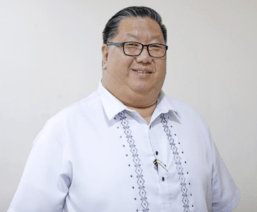FRESH VIEWPOINTS: A NEW PERSPECTIVE
By Brian James Lu

Placing an open bounty—dead or alive—on a killer roaming Metro Manila?
This is exactly what officials of Barangay Addition Hills in Mandaluyong City did to combat the rising dengue cases in their area: offering a bounty of one peso for every five mosquitoes or mosquito larvae—dead or alive. This initiative has even been featured in various media outlets, including international news organizations like The Guardian and Associated Press.
Not to be outdone, officials of Barangay Matandang Balara in Quezon City released frogs into creeks and drainages to control mosquito populations—a strategy they’ve used before with some success.
Many people must have found humor in the barangay (village) officials’ unconventional approach to dengue prevention, but beyond the amusement lies a commendable effort to mobilize the community against a serious public health threat. Through innovative thinking, these officials transformed an urgent health crisis into an engaging, participatory initiative, inspiring residents to take direct action. Offering bounties for captured mosquitoes and releasing frogs into waterways may seem unusual, but these strategies reflect a deep understanding of the importance of grassroots involvement in disease control. Such creative interventions not only raise awareness but also foster a sense of collective responsibility, proving that fighting dengue requires more than just traditional methods—it demands innovation, community engagement, and a willingness to try unconventional solutions.
Naturally, dengue is a serious issue, as it often results in fatalities. Dengue fever has long been a major public health challenge in the Philippines. Ours is a tropical country where the warm and humid climate creates ideal breeding conditions for the Aedes mosquito—the primary vector of the disease. This mosquito-borne viral infection can cause severe flu-like symptoms and, in extreme cases, can be fatal.
In recent years, dengue cases in the Philippines have surged at an alarming rate. As of Feb. 1, 2025, the Department of Health (DOH) reported 28,234 cases nationwide—a 40 percent increase compared to the same period the previous year.
The most populous city in the country, Quezon City, has experienced a particularly severe impact. Between Jan. 1 and March 5, 2025, the City Epidemiology and Surveillance Division recorded 3,608 dengue cases and 12 related fatalities—a staggering 300 percent rise from the previous year.
District 2 has seen the majority of these cases. In response, the Quezon City Health Department declared a dengue outbreak and has been actively implementing measures to contain the spread of the disease.
The dangers of dengue are severe. While many cases present with mild symptoms such as fever, rash, and muscle pain, severe infections can develop into dengue hemorrhagic fever or dengue shock syndrome—both of which can be fatal without immediate medical intervention. Children are especially vulnerable, accounting for a significant portion of dengue-related fatalities.
Tackling the persistent threat of dengue requires a unified effort from various sectors of society. Communities play a vital role in prevention by keeping their surroundings clean, eliminating stagnant water where mosquitoes breed, and actively participating in local clean-up drives. The innovative approaches taken by barangays in Mandaluyong City and Quezon City demonstrate how creative, community-driven solutions can help combat the spread of dengue.
Barangay leaders are at the forefront of these efforts, serving as the government’s closest link to the people. They are responsible for mobilizing residents, enforcing sanitation regulations, and implementing targeted dengue prevention programs. Their leadership is critical in identifying and eliminating mosquito breeding sites, such as stagnant water in canals, drains, and unused containers—common problems in densely populated urban areas.
Beyond enforcement, barangay officials drive community engagement through public awareness campaigns, cleanup drives, and creative, localized initiatives. Their proximity to residents allows them to coordinate swift responses during dengue outbreaks, ensuring that households follow preventive measures and seek medical attention when necessary. By working closely with health officials, non-government organizations, and community volunteers, barangay leaders strengthen grassroots efforts to combat dengue. Their proactive governance, combined with sustained public participation, is essential in controlling the spread of this deadly disease.
Non-government organizations (NGOs) contribute significantly by conducting educational campaigns to raise awareness about dengue prevention and by supporting community-based vector control programs. Their efforts often complement government initiatives, ensuring that information and resources reach even the most vulnerable populations.
The DOH has also intensified its efforts by launching nationwide campaigns like “Alas Kwatro, Kontra Mosquito!” This initiative emphasizes the importance of daily mosquito control activities at 4 p.m., encouraging communities to work together in reducing mosquito breeding sites.
Indeed, dengue remains a significant health threat in our country, exacerbated by our country’s tropical climate, urbanization challenges, and climate change. With the collaborative efforts of communities, NGOs, barangay officials, and national health agencies, there is hope for effective management and reduction of dengue cases. Continuous public education, community engagement, and innovative vector control strategies are essential components in the ongoing battle against this persistent disease.





